- HOME
- Top Page
- Our Businesses
- Numerical Analysis Consulting
Numerical Analysis Consulting
In the field of conventional design, products are designed using general empirical formulas. On the other hand, in recent years numerical analysis using general-purpose programs has made it possible to predict both product performance and thermal hydraulics with a high degree of accuracy.
Therefore, for those that cannot be handled by using a general-purpose program, we either improve the general-purpose program or prepare original code in-house, and use conventional empirical formulas to forecast the validity of a design and the performance of the product, in order to propose improvements in performance.
We also provide consulting based on the results of analyses of problems that affect buildings and other aspects of the environment.
Using General-Purpose Programs to Provide Support for Design
The general-purpose thermal hydraulics analysis code [ANSYS-Fluent] is used to forecast the performance of hydraulic equipment. We use the results to evaluate the validity of the equipment design, and to make proposals for improvements in equipment performance and preventions of trouble.
■ Examples of design support using general-purpose programs
- Forecasting thermal hydraulics inside power plant equipment and piping
- Flow around massifs and structures
- Forecasting the flow around heat exchangers and cooling columns
- Flow around automobiles and airplanes
- Flow in open channels and sea areas
- Flow around buildings
- Flow indoors
Example 1 of Analysis by General-Purpose Program: Flow of Air Diffusion Tank
-
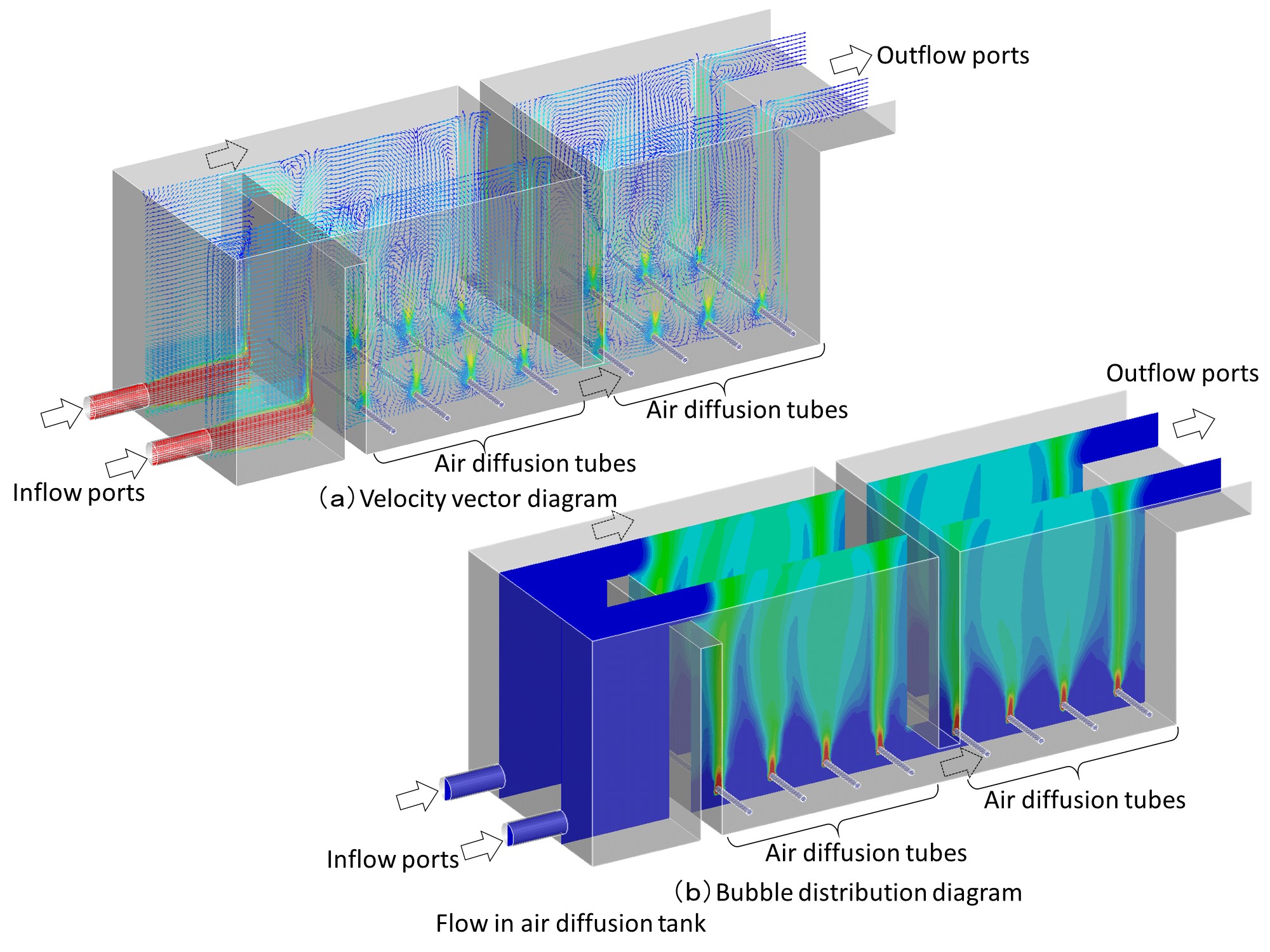
-
It is necessary to forecast the flow of treated water in chemical treatment processes due to air diffusion, while also promoting mixing. There are various forms of gas-liquid multiphase flow, and diverse methods for calculating thermal hydraulics analysis.
This calculation example shows the result of an analysis of a gas-liquid contact tank. (a) shows the flow velocity vector for the flow of treated water, and (b) shows the distribution of the gas phase. From these analysis results, we can evaluate the soundness of the equipment performance by confirming the presence or absence of short-pass flow of treated water and the degree of bias of gas phase diffusion, and calculating the convection time with the treated water and the contact time with the gas phase.
Example 2 of Analysis by General-Purpose Program: Forecasting Wind Conditions
-
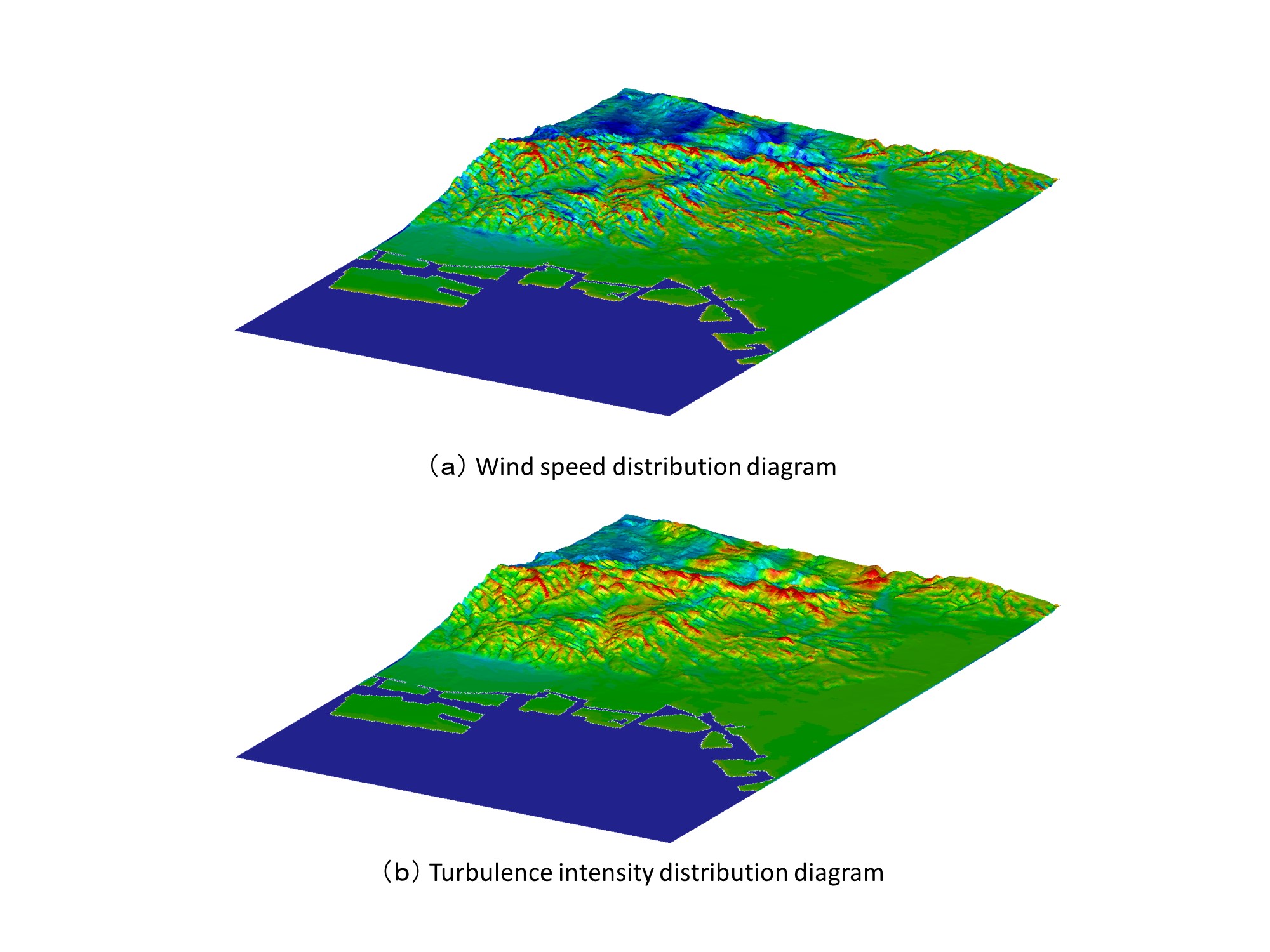
-
The forecasting of wind conditions is an important factor that is required to understand the impact of the installation of renewable energy wind farms and the impact of new building construction projects on the surrounding area. Thermal hydraulics analysis can be used to forecast wind speed, turbulence intensity, wind blowing through buildings, etc. along complex terrain.
This calculation example shows the results of an analysis of the wind conditions in a certain area.(a) shows the wind speed distribution.(b) shows the turbulence intensity at that time. From these analysis results, we can confirm that the wind speed is gentle in the plains. However, it is strong near the summit of mountains due to the influence of undulations, and accompanied by great turbulence. Furthermore, we can see that the wind conditions in the valleys beyond the mountains are milder than in the plains.
Using In-House Code to Provide Support for Design
-
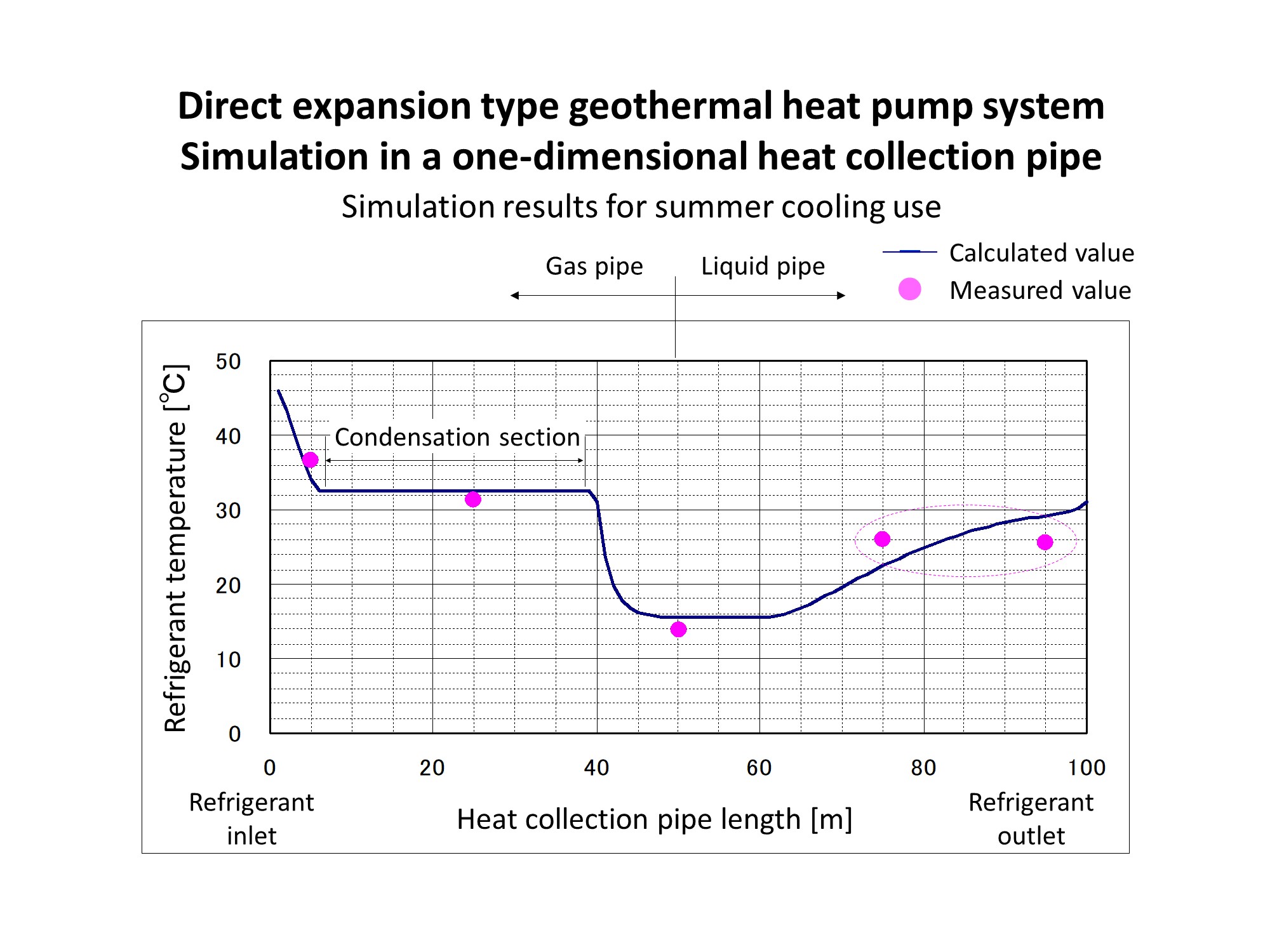
-
We develop our own code to handle individual cases when calculations are too difficult to handle with a general-purpose program. We also create tools to improve work efficiency by systematizing the technical calculations required for equipment design.
■ Examples of using in-house code to provide support for design
- Design optimization program for heat pump system using geothermal heat
- Genetic algorithm optimization program
- Primary energy consumption calculation program
- Cooling flow rate prediction simulation
- Simple calculation for pressure loss
- Simple calculation system for heat transfer coefficient
- Simple analysis model creation tool for car air conditioners
- Simple analysis model creation tool for indoor air conditioners
Example 1 of Calculation Using In-House Code: Geothermal Heat Pump System
-
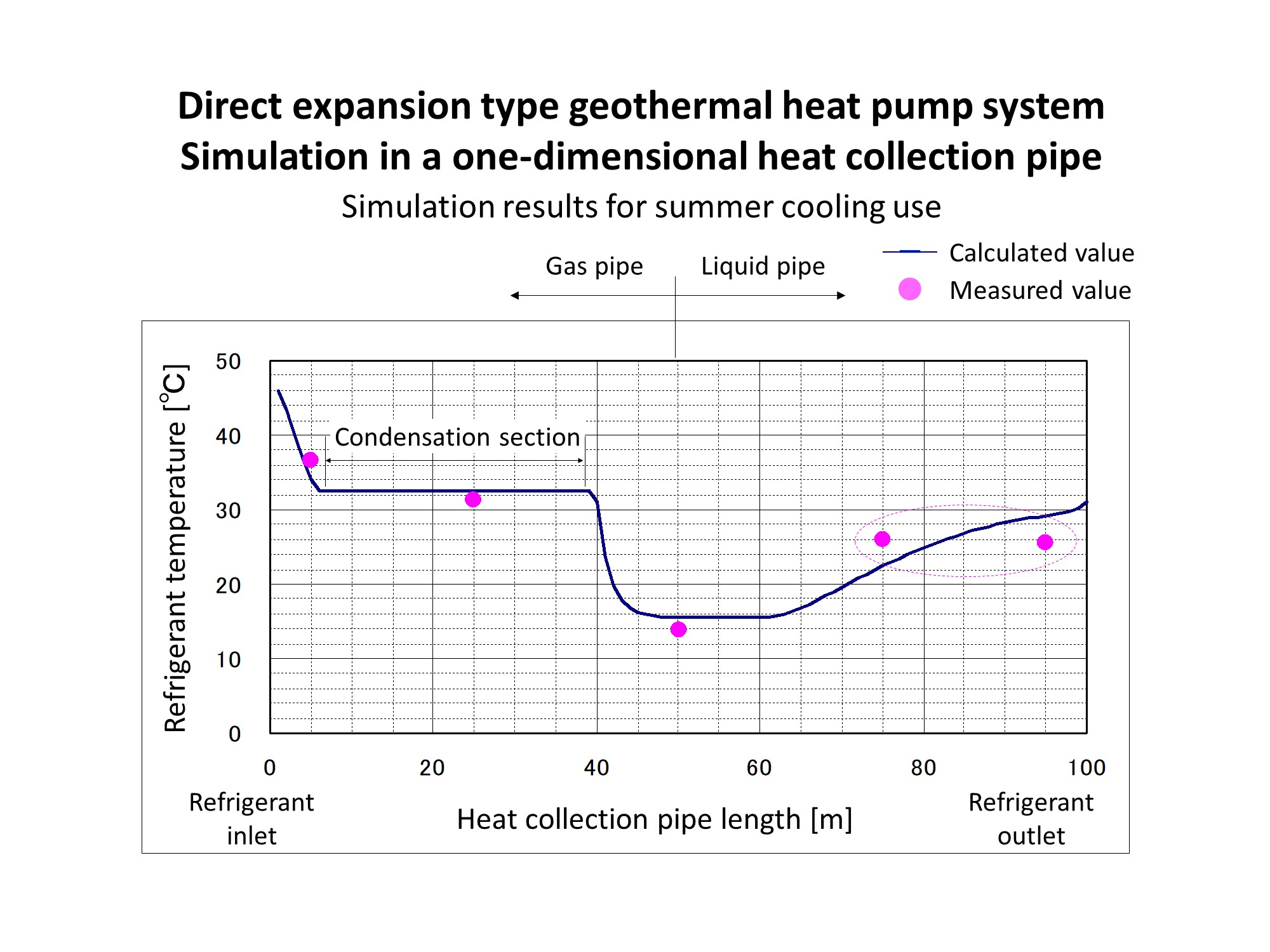
-
The geothermal heat pump system has benefits such as reduction of CO2 emissions and mitigation of the heat island phenomenon, but the high introduction cost hinders its widespread use. The design of the geothermal heat collection pipe is an important part of the geothermal heat pump, because it greatly influences equipment performance and introduction cost.
This is an example of forecasting the amount of heat collected from the underground by calculating the state quantity of the refrigerant flowing through the heat collection pipe buried in the ground. We support optimal system design by simulating the heat collection status of the refrigerant in the geothermal heat pump.
Example 2 of Calculation Using In-House Code: Primary Energy Consumption Calculation
-
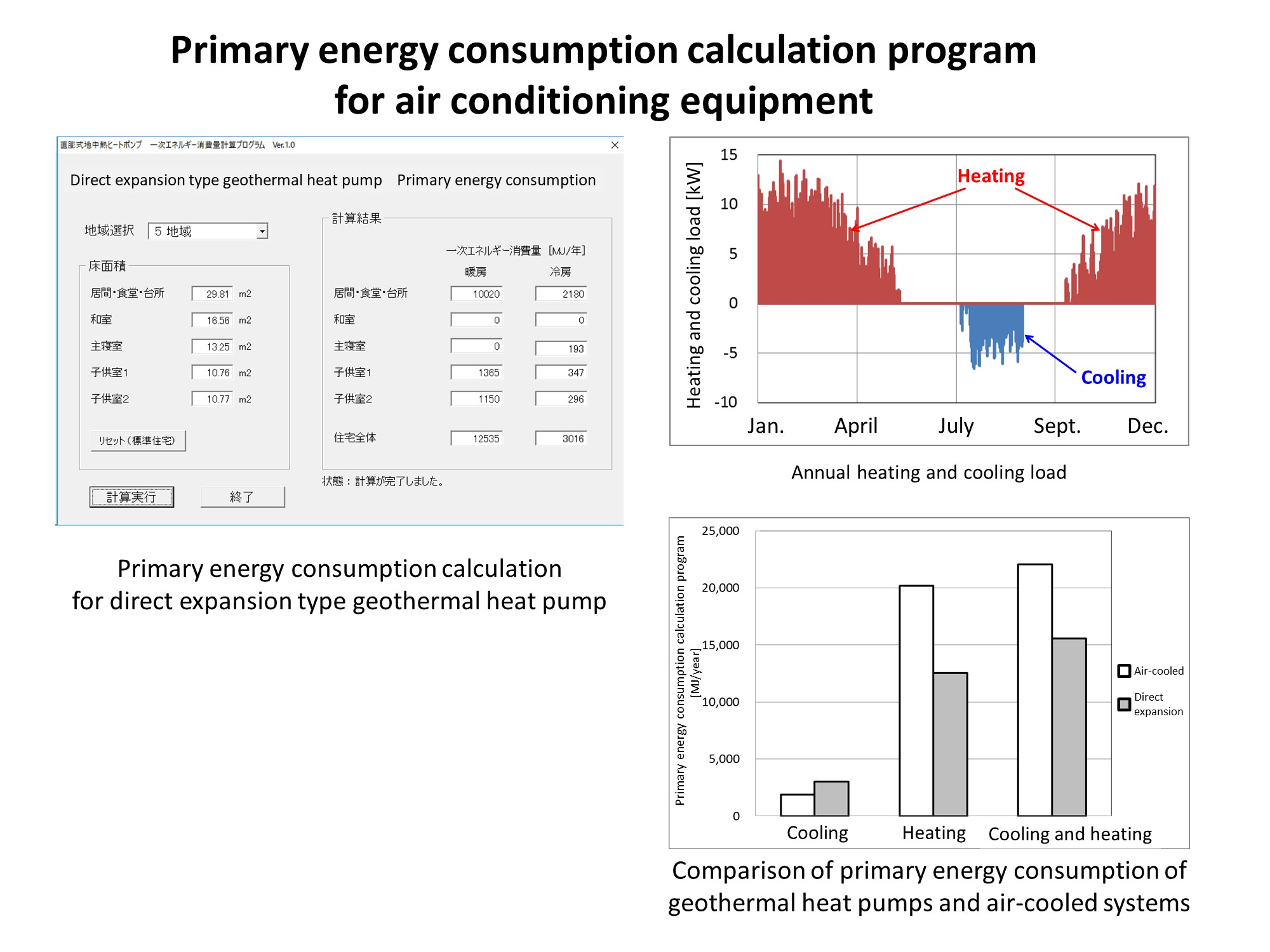
-
Calculating the primary energy consumption for air conditioners is a necessary standard for evaluating their energy conservation performance. Air conditioning equipment that uses geothermal heat provides higher energy conservation performance than general air-cooled air conditioners. Although a method for calculating the primary energy consumption of air-cooled air conditioners used in houses has been established, a method for calculating geothermal heat has not.
This is an example of calculating the primary energy consumption of a direct expansion type geothermal heat pump for a standard house.
Incorporating the heating and cooling load for each region as a database makes it easy to calculate the primary energy consumption.
By comparing this calculation result with an air-cooled air conditioner, we can confirm the superiority of geothermal heat utilization.
